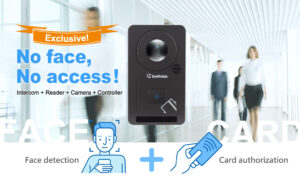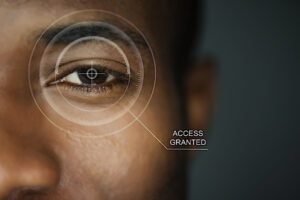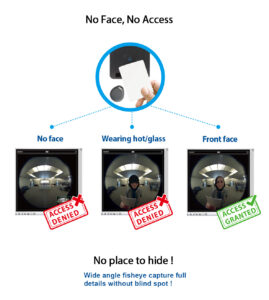
More and more, end user organizations are deploying multimodal biometrics, which have certain advantages over unimodal solutions. Fingerprint readers alone, for example, can’t read people with broken or wrinkled skin.
Multimodal readers combining two biometrics, be they fingerprint and face or fingerprint and finger vein, offer greater flexibility and security, suiting the end user’s access control needs.
Typically, access control entails the use of any of the three authentication factors, namely cards/tokens (what you have), passwords (what you know) and biometrics (what you are). Increasingly, biometrics, or the “what you are” factor, have become more and more common as the user’s identity can’t be lost, stolen or forgotten as compared to the other factors.
The majority of customers still use metal keys or cards or badges to secure their doors. If those same customers haven’t yet experienced a break-in due to misuse or lose of keys/cards, then they’d be hard-pressed to invest in new technology, for example fingerprint and face readers. But for new installations, it becomes a no brainer. Biometrics is far more secure and convenient than keys and cards because you cannot forget, lose or have stolen your biometric credential.

In the very beginning, unimodal biometrics taking just one biometric from the user, be it finger, face, iris or palm, was common. However increasingly users have found unimodal biometric technology limiting. In terms of fingerprint, for example, there will always be a certain percentage of people whose fingerprint can’t be read. Face readers, meanwhile, normally don’t perform that well when installed outdoors or exposed to bright sunlight. Adding a second biometric thus becomes a viable option.
In fact, the growth potential of multimodal biometrics is not to be ignored. According to a report by Technavio, the research institute forecasted that globally, multimodal biometric solutions would grow at a compound annual growth rate of 15 percent between 2016 and 2020.

Advantages of multimodal biometrics
There are various benefits of multimodal biometrics.One is enhanced security at the end user organization, who can authenticate staff/people via two biometrics instead of one. The benefit is that they provide multiple authentication. If the organization requires a higher security level they can use multiple modes of identification. For example, the person may scan their fingerprint and face to gain access.
The fusion of complementary biometric modalities yields higher match performance; that is, fewer false match, false non-match and failure-to-enroll rates. Conditions may exist where a particular modality cannot be satisfactorily captured, or where a user prefers one over the other. In this case, only one modality is chosen over the other, but this also in a way improves performance and security because capture of poor data and failure-to-enroll is reduced.
Having multi-model hybrid biometrics improves security, since customers can ‘layer’ the security by using multifactor authentication. For instance, you can implement two-factor authentication which forces users to present a valid fingerprint plus face prior to the device granting them door access. Some of hybrid-biometric models have up to four biometric sensors, a card reader and a keypad. The possibilities for security and convenience become endless when considering the use of multimodal biometric technology.

In fact, according to the aforementioned Technavio report, during 2015, North America dominated the multimodal biometrics market and accounted for close to 39 percent of the market share in terms of revenue primarily due to security issues. The rising instances of criminal activities have resulted in an augmented demand for a multi-modal biometric system to identify criminals. This has also forced the government to increase its spending on biometric technology. Also, several airports in the region are implementing multi-modal biometric systems to secure identification of travelers.
Flexibility meanwhile is another benefit. Multimodal biometric readers provide alternative methods for identifying a person. For example, if the fingerprint doesn’t work you can use facial recognition or even a card credential. Flexibility is probably the most important advantage. For example, it provides the ability to use fingerprint for some people and facial recognition for others.
Multimodal biometrics provides various clocking or access options to the users and they can choose to use the options as they pleased. System flexibility is well sought after by customers.
Source: a&s Magazine



































































